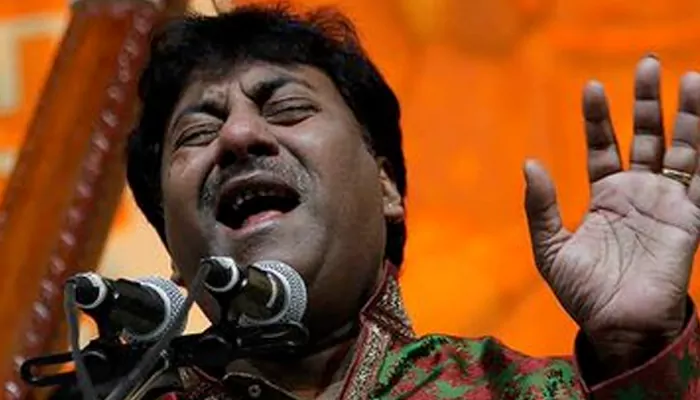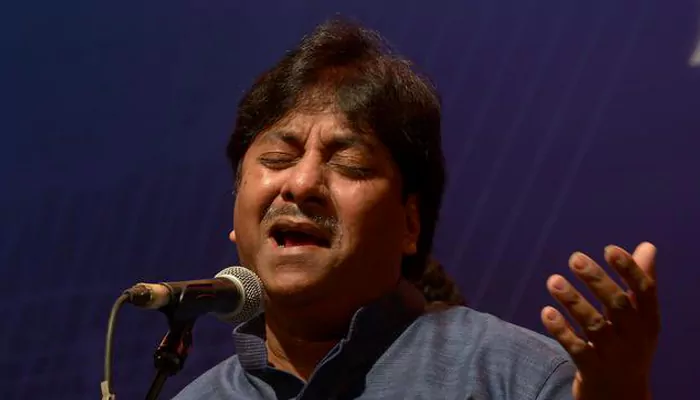
The maestro of Indian classical music wasn’t too inclined toward Bollywood, but without him, “Aaoge Jab Tum” would’ve never found its soul.
"Aaoge Jab Tum" comes in at the most emotional point in 'Jab We Met'. It plays when Aditya, who has fallen for Geet silently, drops her at Anshuman’s doorstep and walks away, expecting nothing in return. There are no words, and that’s exactly how director Imtiaz Ali wanted it. Because sometimes, the pain of unspoken love and the heartbreak of letting go is best felt in silence. That silence is filled by the song, which leaves you with a lump in your throat. And what makes it so deeply moving is the voice behind it, Ustad Rashid Khan. His classical training brings a kind of depth (feels almost supernatural) that no regular playback singer could have delivered. However, getting him to sing it wasn’t that simple. Ustad Khan was never really drawn to Bollywood. Even after the song became a hit, he chose to stay away from commercial films. So how did this rare gem come to life? On the maestro’s birth anniversary, we go back to the stories behind "Aaoge Jab Tum", and the magic that almost didn’t happen.
(Credit: T-Series)
Not many know that "Aaoge Jab Tum" wasn’t originally composed for 'Jab We Met". Sandesh Shandilya had written its opening lines way back in 1993. It sat with him for over a decade, unused, until director Imtiaz Ali heard it while working on his second film. The moment he listened to it, he knew it was the song that would capture the emotional weight between Geet and Aditya. With lyricist Faaiz Anwar’s words added to the mix, Shandilya revived the tune, and a classic was born.
When it came to choosing a voice for the song, Shandilya didn’t want a regular playback singer. He wanted someone who could bring soul and purity to it - and that’s exactly what Ustad Rashid Khan stood for. Known for his deep classical roots and emotional depth, Khan’s voice had a quality that spoke directly to the soul. Imtiaz Ali once said it felt like a “morning prayer and a midnight lullaby rolled into one.” So, for a song that had to feel like silent heartbreak, he was the perfect match.

Rashid Khan wasn’t easy to convince. He wasn’t really interested in Bollywood, and when approached, he quoted a large fee, likely as a gentle way of saying no. But Shandilya didn’t give up. He replied with a line straight from the heart: “Aap mana nahi kar sakte, kyunki main aap se bahut pyaar karta hoon.” That honesty moved Khan. Shandilya even flew to Kolkata to meet him in person, and that’s when things changed. Touched by the composer’s passion and sincerity, the Ustad finally agreed.

Despite being a giant in the world of classical music, Khan walked into the recording studio with humility. “Don’t treat me like an Ustad,” he told the team, adding, “Guide me like a debutant.” He wanted to serve the film, not his own name. And his improvisations (subtle touches drawn from thumri and Hindustani traditions) gave the song its unique emotional pull. He later admitted he didn’t expect it to become such a hit, but loved the simplicity of the composition.

The song is based on Raag Tilak Kamod, known for its soft, bittersweet nature. Rashid Khan, who had trained under the legendary Ustad Nissar Hussain Khan and spent years perfecting a single note, brought that depth effortlessly. He didn’t rush through the tune, instead, he let it breathe. Shandilya and Ali worked with him to keep the rendition accessible, ensuring it reached beyond just classical music lovers. And it did. The song touched everyone, from the trained ear to the casual listener, and from the young to the old.